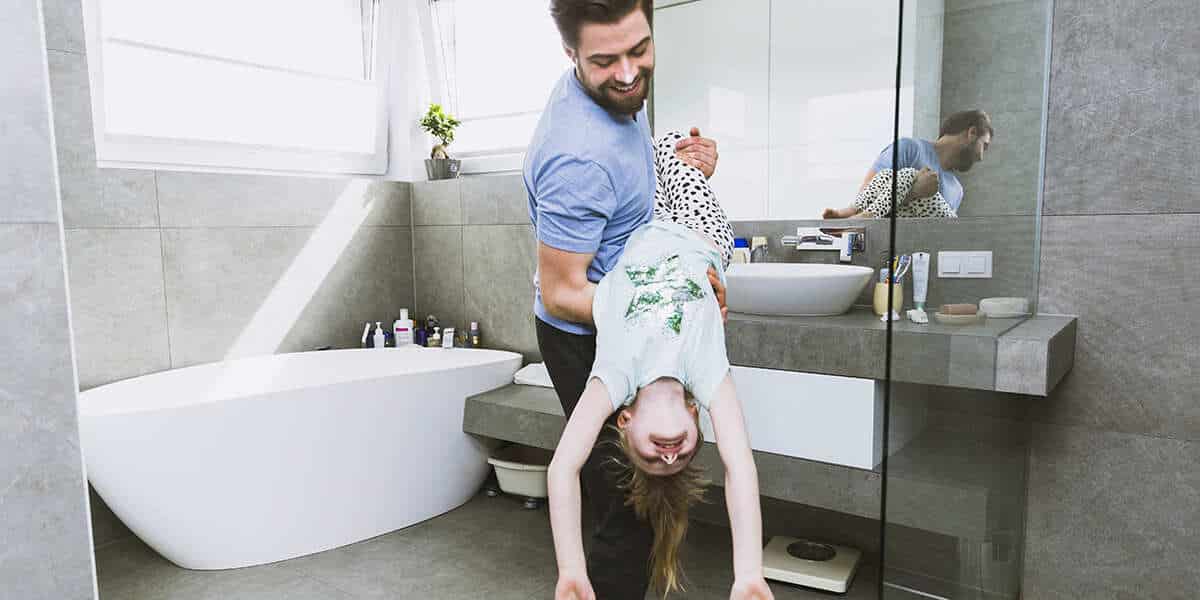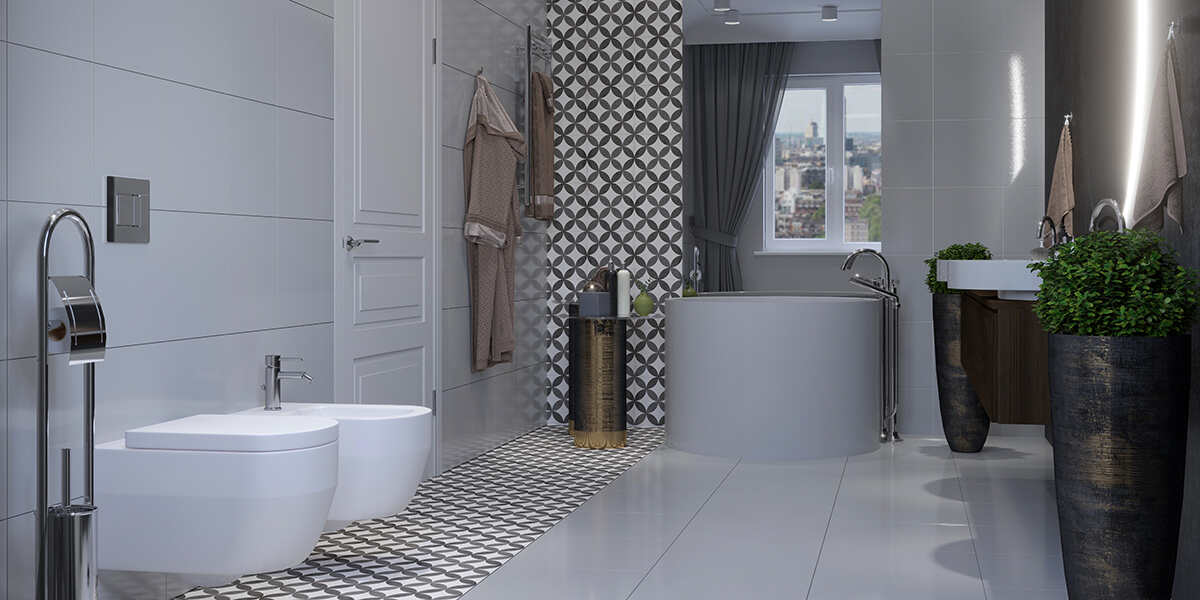Are you tired of stepping over a high tub wall or dealing with cramped shower spaces? Walk-in showers offer a modern, accessible solution to transform your bathroom experience.
These spacious, open designs are gaining popularity for their blend of style and functionality. In this guide, Payless Bath Makeover will explain walk-in showers and help you navigate the choices to find the perfect fit for your bathroom remodeling in Glendale, CA, or anywhere else.
What Is a Walk-in Shower?
A walk-in shower is an open shower area that you can enter without stepping over a tub wall or threshold. These showers typically feature a barrier-free entry, making them easily accessible for people of all ages and mobility levels. Walk-in showers come in various styles, from sleek and minimalist designs with frameless glass enclosures to more traditional looks with partial walls or curtains.
The defining characteristic of a walk-in shower is its open, spacious feel. Without the confines of a traditional shower stall or tub, you’ll enjoy more room to move and a luxurious shower experience. Many walk-in showers incorporate features like built-in benches, multiple showerheads, and elegant tile surrounds to create a spa-like atmosphere in your own home.
What Are the Benefits of Walk-In Showers?
Walk-in showers offer several benefits that make them highly sought after. Here are some key benefits to consider:
-
Improved accessibility: The barrier-free entry makes it easier for people with mobility issues to use the shower safely.
-
Easy cleaning: With fewer nooks and crannies, walk-in showers are generally easier to keep clean than traditional shower stalls or tub-shower combos.
-
Increased space: Walk-in showers can make your bathroom feel larger and more open, even in smaller spaces.
-
Customization options: You can tailor your walk-in shower with various features, from built-in storage to multiple showerheads.
-
Enhanced home value: A stylish walk-in shower can boost your home’s resale value and appeal to potential buyers.
For more detailed information on the benefits and design options, check out this comprehensive walk-in shower guide from Forbes.
What To Consider When Getting a Walk-In Shower
Before you commit to installing a walk-in shower, you need to weigh a few factors:
-
Available space: Ensure your bathroom has enough room to accommodate the walk-in shower design you want.
-
Water containment: Without a tub wall or high threshold, you’ll need to plan for proper drainage and splash protection.
-
Existing plumbing: Consider whether your current plumbing setup can support the new shower configuration.
-
Ventilation: Proper ventilation is crucial to prevent moisture buildup and mold growth in an open shower area.
-
Privacy: If you’re replacing your only bathtub, think about how this might affect your home’s resale value and your lifestyle.
In addition to those above, considering the costs, pros, and cons of a walk-in shower is essential for making the most of your investment,
How Much It Costs
The cost of a walk-in shower can vary widely depending on factors such as size, materials, and features. On average, you can expect to spend between $2,000 and $15,000 for a complete walk-in shower installation. This price range includes labor and materials.
Basic prefabricated walk-in shower kits start around $2,000 to $5,000, while custom-tiled showers with high-end fixtures can run $10,000 or more. Labor costs typically account for 40 to 60% of the total project cost, depending on the complexity of the installation and your location.
The Pros of Walk-In Showers
Walk-in showers offer numerous advantages that make them a popular choice for homeowners. Their accessibility ensures easy entry and exit for users of all ages and abilities. These showers create a modern, open look that can transform your bathroom’s aesthetics.
The customization options are nearly endless, allowing you to tailor the design to your personal style. Maintenance is a breeze, with fewer nooks and crannies to clean. Additionally, walk-in showers can increase your home’s value, making them an attractive feature for potential buyers.
The Cons of Walk-In Showers
Despite their benefits, walk-in showers have some potential drawbacks to consider. The open design can lead to water splashing, requiring careful planning to contain water effectively. Some users may find the lack of enclosure reduces privacy compared to traditional shower stalls.
The larger, more open space can feel chilly, especially in cooler climates. Initial costs for custom walk-in shower designs can be higher than standard shower installations. Lastly, if you’re replacing your only bathtub with a walk-in shower, it might affect your home’s resale value, as some buyers prefer having at least one tub in the house.
The Different Types of Walk-In Showers
Walk-in showers come in various styles to suit different preferences and bathroom layouts:
-
Doorless walk-in showers: These open-concept designs have no door or curtain, relying on proper slope and drainage to contain water.
-
Glass-enclosed walk-ins: These feature a frameless glass enclosure for a sleek, modern look while containing water splashes.
-
Partial wall walk-ins: These use a half-wall or partition to separate the shower area from the rest of the bathroom.
-
Wet room style: The entire bathroom floor is waterproofed, with the shower area seamlessly integrated into the space.
-
Corner walk-in showers: Ideal for smaller bathrooms, these designs make efficient use of corner spaces.
-
Tub-to-shower conversions: Transform an existing tub space into a walk-in shower for a cost-effective renovation option.
How To Pick the Right Kind of Walk-In Shower
Choosing the perfect walk-in shower for your bathroom involves several important considerations. Start by assessing your space and carefully measuring your bathroom to determine the maximum size for your new shower. Next, consider your specific needs, including accessibility requirements, desired features, and how you plan to use the space.
Setting a budget is crucial. Determine how much you’re willing to spend on materials, labor, and extra features before you begin. With your budget in mind, choose your preferred style, deciding on the overall look you want, from minimalist glass partitions to luxurious tile surrounds.
Material selection is key to both aesthetics and functionality. Pick durable, water-resistant materials that match your design preferences and suit your maintenance habits. Don’t forget to plan for proper drainage, ensuring the right slope to prevent water pooling and potential damage.
Storage is often overlooked but essential for a functional shower. Consider incorporating built-in niches or shelves for your shower essentials. When it comes to fixtures, select showerheads, faucets, and other elements that complement your design and meet your needs.
When selecting features for your walk-in shower, consider options that enhance both safety and luxury. Non-slip flooring provides essential traction, while a rainfall showerhead can offer a spa-like experience. A frameless enclosure can add a modern touch, elevating your shower from merely functional to truly fabulous. These thoughtful elements can make your daily routine a rejuvenating retreat.
Let Payless Bathroom Makeover Transform Your Bathroom
Walk-in showers offer a blend of style, functionality, and accessibility that can transform your daily routine. By considering factors like space, budget, and personal preferences, you can create a shower that meets your needs and enhances your home’s value. If you’re noticing signs to replace your shower, it might be time to consider a walk-in shower upgrade.
At Payless Bath Makeover, we specialize in creating stunning walk-in showers tailored to your style and needs. Our experts can guide you through every step of the process, from design to installation. Whether you have a specific vision or need inspiration, we can help turn your bathroom into a whole new, luxurious space.
Are you ready to elevate your bathroom with a custom walk-in shower? Call our team at Payless Bath Makeover today at 888-389-9955 for walk-in showers in Glendale, California.
- Best Materials for Your Bathroom Vanity Cabinets - March 19, 2025
- What Is a Bathroom Vanity? - March 19, 2025
- How an Aging-in-Place Bathroom Remodel Can Help You Stay Independent - February 19, 2025





